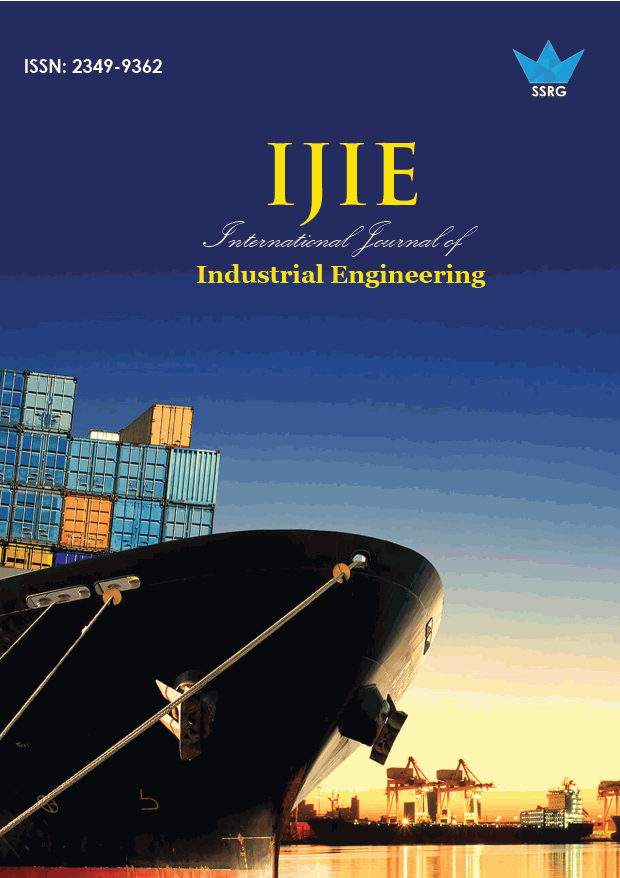Essentials of Aircraft Owners And Crews on Air Safety

| International Journal of Industrial Engineering |
| © 2020 by SSRG - IJIE Journal |
| Volume 7 Issue 1 |
| Year of Publication : 2020 |
| Authors : Kanyio, Olufunto Adedotun |
How to Cite?
Kanyio, Olufunto Adedotun, "Essentials of Aircraft Owners And Crews on Air Safety," SSRG International Journal of Industrial Engineering, vol. 7, no. 1, pp. 25-34, 2020. Crossref, https://doi.org/10.14445/23499362/IJIE-V7I1P103
Abstract:
This study aims to investigate the essentials of aircraft owners and crews on air safety. It relied on facts from pieces of literature. The implications of changes in insuring cabin crew were being discussed and the duties of airlines to the crew staff were elaborated. Underpinning theories were expanded on air safety and related hazards of the cabin crew were identified in the study. It was concluded that Aircrew especially cabin/flight crew are needed to have excellent people skills, to be able to keep calm under pressure, team working skills, the ability to discern quickly even under duress and in confined conditions.
Keywords:
Aircraft, Owners, Aircrew, Safety
References:
[1] Transport Canada Civil Aviation, (2005).
http://www.tc.gc.ca/CivilAviation/commerce/CabinSafety/program.htm
[2] International Air Transport Association (2005). “Cabin Crew Turbulence – related Injuries. Safety Trend Evaluation”, Analysis and Data Exchange System, International Air Transport Association.
[3] International Air Transport Association (2005). “Cabin Operations Safety Programme”, International Air Transport Association.
[4] International Air Transport Association (2005). “Cabin Operations Safety Toolkit”, International Air Transport Association.
[5] International Air Transport Association (2005). “Inadvertent Slide Deployments’, Safety Trend Evaluation, Analysis and Data Exchange System”, International Air Transport Association.
[6] International Air Transport Association (2005). “Safety Management Systems - The senior airline manager’s implementation guide”, International Air Transport Association
[7] Kai-Hui, L., Margaret, S., and Li-Hua, K. (2006). Development of Utilities to Assess Airline Cabin Safety Culture, 1-18.
[8] Rhoden, S., Ralston, R. and Ineson, E. M. (2008). “Cabin crew training to control disruptive airline passenger behavior: A cause for tourism concern?” Tourism Management, 29(3), 538-547. doi: 10.1016/j.tourman.2007.06.002
[9] Mahoney, P. H., Griffiths, R. F., Larsen, P. and Powell, D. (2008). “Retention of knowledge and skills in first aid and resuscitation by airline cabin crew”. Resuscitation, 76(3), 413-418. doi: 10.1016/j.resuscitation.2007.08.017
[10] Pels, E. (2008). “Airline network competition: Full-service airlines, low-cost airlines and long-haul markets”. Research in Transportation Economics, 24(1), 68-74. doi: 10.1016/j.retrec.2009.01.009
[11] FSF Editorial Staff (2001). “Remaining Seated During Taxi, With Restraints Fastened, Encourages Safety Focus”, Prevents Crewmember Injury. Cabin Crew Safety, vol. 36, no. 5.
[12] FSF Editorial Staff (2001). “Strategies Target Turbulence-related Injuries to Flight Attendants and Passengers”. Cabin Crew Safety, vol. 36, no. 1.
[13] FSF-Taiwan (2005). Analysis of cabin personnel injury for Taiwan airlines, 2001-2004‟ Flight Safety, vol.43, pp. 19-21.
[14] John, M. (1990). The Putnam Aeronautical Review. Vol. 1, Pp.170, Naval Institute Press.
[15] International Air Transport Association (2006). “Cabin crew’s personal safety’, Turbulence Management Training Material”, International Air Transport Association Cabin Operations Safety Toolkit
[16] Pirie, G. H. (2009). “Incidental tourism: British imperial air travel in the 1930s”. Journal of Tourism History, (1), 49–66.
[17] Price, J. and Forrest, J. (2016). “Commercial aviation aircraft operator security”. In J. Price and J. Forrest (Ed.), Practical Aviation Security: Predicting and preventing future threats (pp. 341-392). doi: 10.1016/B978-0-12-804293-9.00008-4
[18] Prinz, I. (2017). Training and security in the aviation industry. Bachelor Thesis for Obtaining the Degree Bachelor of Business Administration in Tourism, Hotel Management and Operations.
[19] Belobaba, P., Odoni A., and Barnhart, C. (2009). The Global Airline Industry. 2009, John Wiley & Sons, Ltd Wiley, Chichester.
[20] International Civil Aviation Organization (2008). “List of Government-owned and Privatized Airlines (unofficial preliminary compilation)” (PDF).
[21] Elias, B. (2010). Airport and Aviation Security. CRC Press, 2010.
[22] Imperial Air Transport Company (2011). “Appointment of Government Directors”. Flight. December 20, 1923.
[23] International Air Transport Association (2015). Guidance on Unruly Passenger Prevention and Management
[24] Transport Canada (1996). Flight Attendant Manual Standard, Transport Canada.
[25] Moxon, R. (2010). Airport Security. Lecture at Department of Air Transport, University in Zilina, December 2010.
[26] Thomas, O. (2013). Marketing Strategies and Business Performance of Domestic Airlines in Nigeria
[27] Thomas, O. (2003). Aviation Insecurity-The New Challenges of Air Travel. Prometheus Books, 2003.

 10.14445/23499362/IJIE-V7I1P103
10.14445/23499362/IJIE-V7I1P103